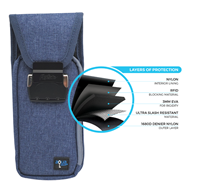1. Introduction
Compressed air stands as the second-largest power source following electricity. It serves as a versatile process gas indispensable to over 80% of manufacturing enterprises. Its applications range from direct product interaction to the operation of pneumatic equipment. Despite its versatility, the quality of compressed air is often compromised by contaminants. The list includes such as solid particles, moisture, and oil mist. These impurities can adversely affect equipment performance. And product quality that necessitates innovative solutions. To ensure the integrity of air compressor systems.
2. Understanding the Challenges
- Solid Particles
Air compressor inlet filters fail to cut particles smaller than 2μm. It leads to the accumulation of abrasives, and rust residues. And the carbonized oil within air compressor systems. These contaminants speed up equipment wear and contribute to seal failures.
- Moisture
Upon compression, atmospheric air becomes saturated with moisture, carrying many liquid water droplets. These droplets promote corrosion in equipment, pipelines, and valves. With winter freezing obstructing pneumatic system microchannels. Even with clean, saturated air, condensation persists as temperatures drop. It leads to a 50% reduction in saturation moisture content for every 10°C decrease.
- Oil Content
Lubricating oils in high-speed, high-temperature air compressors serve essential functions. That includes such as lubrication, sealing, and cooling. But, they contaminate compressed air. While oil-free compressors reduce oil content, they pose threats to component lifespan. And induce rust within machine internals and pipeline systems. Particularly in critical automated production lines and pneumatic equipment.
3. Innovations in Clean Compressed Air Systems
Addressing the challenges outlined above requires innovative solutions. That too across various components of compressed air systems. Here, we delve into the advancements in key areas:
- Advanced Dryer Technologies
Refrigerated air dryers use refrigeration technology. To condense water vapor in compressed air and expel liquid droplets. That too through automatic drainage valves. Yet, they are temperature-sensitive. With efficiency decreasing by 30% for every 5°C increase in inlet temperature. Can technological innovation broaden the adaptability of refrigerated dryers to varying environmental temperatures? Certainly.
- Enhanced Air Receivers
Air receivers play a crucial role in buffering, cooling, and removing water and oil from compressed air. By rapid temperature reduction and condensation of water vapors. Air receivers drop moisture and oil content. This ensures cleaner compressed air for downstream processes.
- Improved Pre-filters
Atmospheric air contains solid particles, oil molecules, dust, and impurities. Which increases significantly after compression. Pre-filters are essential for purifying compressed air. They do so by removing liquid water, oil, and particles larger than 1μm. Failure to use pre-filters can lead to reduced dryer efficiency. Or even damage to downstream components.
- Enhanced Dryer Performance
The primary function of dryers is to remove water molecules from compressed air. They do so by reducing the moisture content to the required range specified in ISO8573.1. Technological innovations aim to achieve lower and more stable dew points. They extend the dryer lifespan, reduce energy consumption, and optimize the structure for enhanced performance.
- Superior Post-filters
Post-filters play a crucial role in removing oil mist concentration from compressed air. To much higher standards. While also eliminating particles larger than 0.01μ and oil content greater than 0.003PPM. Maintaining the integrity of post-filters ensures the delivery of clean compressed air for downstream processes.
4. Conclusion
The challenges and innovations in maintaining clean air compressor systems are very crucial. They underscore the critical importance of ensuring the integrity of compressed air for industrial applications. Inherent complexities of air compression include solid particles, moisture, and oil contaminants. This demands innovative solutions to mitigate their detrimental effects on equipment performance. And product quality as well.
By addressing these challenges head-on, industries can unlock significant benefits. Also operational efficiency, equipment reliability, and product consistency. The advancements in dryer technologies, air receivers, pre-filters, and post-filters represent. Makes a paradigm shift in how compressed air systems designed, operated, and maintained.
Moreover, the pursuit of cleaner compressed air extends beyond mere compliance. Especially with industry standards; it embodies a commitment to excellence and continuous improvement. Manufacturers must continually strive to embrace the latest advancements in air compressor technology. And integrate them seamlessly into their operations to stay ahead in today’s competitive landscape.








